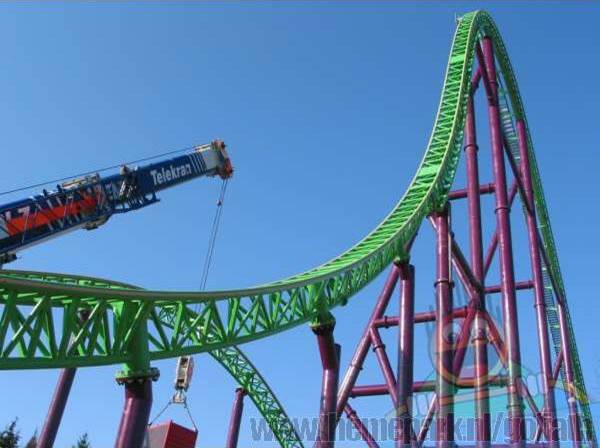A roller coaster ride begins with an engine hauling a train of cars up to the top of a steep grade and releasing them. From this point on the train is powered by gravity alone and the ride can be analyzed by using the fact that as the train drops in elevation its potential energy is converted into kinetic energy.
It is not too hard to derive a formula for the time t required for a
ride along any curve y = y (x) that the roller coaster track takes. The
result is the following formula:
Once the curve y (x) for the roller coaster track is given, it and its
derivative y'(x) can be substituted into this formula and the integration
can be carried out.
At the point x in the picture the potential energy lost is mgy so the
kinetic energy at that point is given by:
Solving for v gives:
The following notation y(x) and v(x) has been written instead of just y and v to emphasize the fact that the elevation drop and hence the velocity both depend on the horizontal coordinate x.) This is the basic formula which can now be manipulatedand solved.
First, the velocity v is measured along the curve so we must rewrite
it in terms of its horizontal and vertical components. To do this let:
• s represent the accumulated distance along the curve,
• ds represent a small incremental distance along the curve, and
• dx and dy represent the horizontal and vertical components of ds
Then:
• ds/dt represents the velocity along the curve,
• dx/dt represents the x component of the velocity,
• dx and dy are given by Pythagoras' theorem, and
• the chain rule gives:
Substituting this into our basic formula gives:
At this point the curve y(x) for the roller coaster track must be specified. Then it and its derivative y'(x) can be substituted into this formula and this is seen to be a differential equation whose solution is some function x(t).
